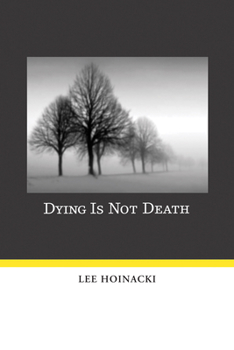Dying Is Not Death
Select Format
Select Condition 
Book Overview
Dying Is Not Death examines from a traditional humanistic position the act of dying. The author views death as a universal experience that can and perhaps should force us to explore various technological intrusions upon it. Each chapter is an independent narrative, and some chapters tell stories of those struggling to die when confronted with the medical system's technological artifacts. Recounting different persons' experiences of death, Lee Hoinacki suggests that the medical system's conventional approaches to dying and death can distort our preparation for this most important experience. Borrowing from Jacques Ellul and Ivan Illich, Hoinacki acknowledges technology as an all-embracing system with powerful symbolic effects on the human condition and argues to a conflict between faith and technology. Indeed, with Ellul, he holds that in order to criticize technology, one must find some ""place"" outside the technological milieu that would act as a kind of Archimedean lever. One must somehow get to the Beyond to judge where one stands in the world.
Format:Paperback
Language:English
ISBN:159752879X
ISBN13:9781597528795
Release Date:December 2006
Publisher:Resource Publications (CA)
Length:270 Pages
Weight:0.90 lbs.
Dimensions:0.6" x 6.3" x 9.0"
Customer Reviews
2 ratings
Makes one think
Published by Thriftbooks.com User , 17 years ago
Lee Hoinacki is an observer, thinker and teacher. He writes about modern society from his Catholic faith perspective, but does not force his views on the reader. Dying is not Death are his thoughts about how he sees modern society dealing with death. He gives us examples : his father, his brother, friends, a community in Mexico where he lived and others. The book's bibliography is extensive. The notes had me going to Wiki and Google all the time. It was a class and I learnt.
Facing Life and Facing Suffering
Published by Thriftbooks.com User , 17 years ago
"[T]o be human is to work out and practice one's own art of suffering," Lee Hoinacki writes in his most recent book. "But the medical system substitutes mechanical and drug fixes for the continual struggle needed to exercise an art." Through moving stories about how people close to him - his father, his brother, and his long-time friend Ivan Illich - faced suffering and death, Hoinacki illuminates ways in which this forgotten art can be practiced even in the modern technological world. To those who struggled to understand why Illich insisted on living with a great tumor on his cheek - what he simply referred to as "my bump," he helps us to grasp his (and Hoinacki's) rejection of the pursuit of health as a modern fetish preventing us from being fully alive. Weaving together narrative and interpretation based upon Catholic faith, Hoinacki shows how living, suffering, and dying are all one. How can one attempt to live as a human being in a world dominated by the medicalization of existence? "The one action clearly open to me is to say 'NO,'" Hoinacki tells us. "No, I will not obey. I will not make myself compatible with the program. This may be a necessary absolute today to begin to live humanly, and to the degree possible, autonomously and virtuously." To those who aspire to living as an art - even if a largely lost one - Dying is Not Death is a beacon that shows a way through the dense technological systems of modern existence. David B. Schwartz





